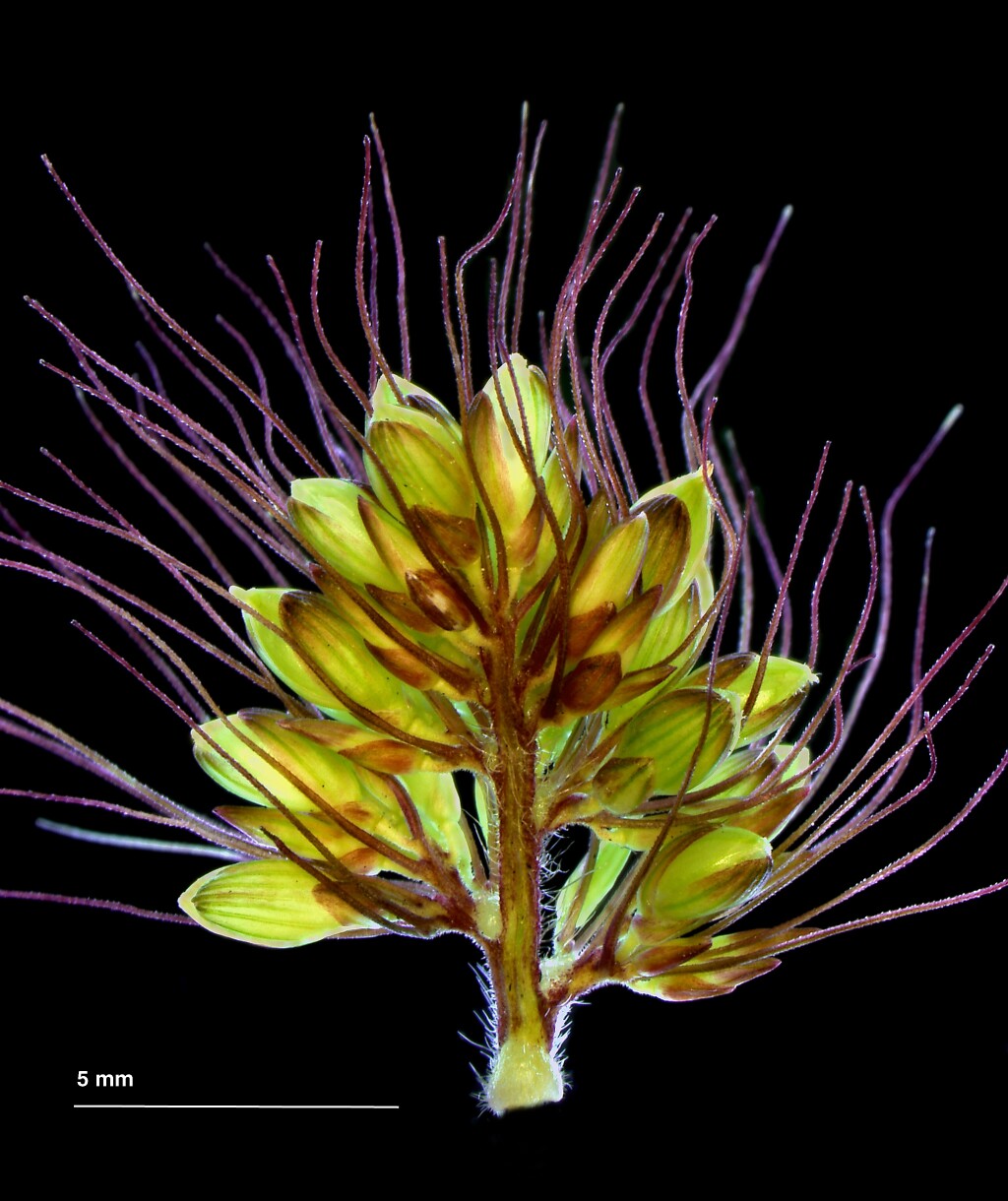Setaria italica
(L.) P.Beauv. Italian MilletTufted annual, sometimes purplish overall. Culms erect, to 1.5 m high. Leaves glabrous, or the sheath-margins ciliate; blade flat, scabrous, to 30 cm long and 30 mm wide; ligule 1–2 mm long. Panicle cylindric, 3–18 cm long, up to 3 cm wide, very dense, often `lumpy', blanches spreading, 10–25 mm long, or not developed. Spikelets blunt, gaping, 2.4–3 mm long, most subtended by a single antrorsely barbed bristle 5–15 mm long; lower glume 3–5-nerved, ovate, from one-third to one-half as long as spikelet, usually inserted distinctly below upper glume; upper glume 5–7-nerved, elliptic, obtuse, slightly shorter than spikelet; lower floret neuter, its lemma subequal to spikelet, its palea rudimentary or lacking; fertile lemma blunt, usually shortly exceeding other segments, dorsally rounded, smooth to granular, usually yellowish, falling separately (with palea), leaving glumes and lower floret attached (but these also fall later). Flowers Feb.–Apr.
VVP, VRiv, GipP, Gold, NIS, HSF, HNF. Naturalised in all states except NT. Apparently derived from S. viridis and cultivated for its superior yield and grain. Uncommon and of scattered occurrence in Victoria, most collections attributable to scattered seed around birdcages or grain handling and transport areas.
Walsh, N.G. (1994). Poaceae. In: Walsh, N.G.; Entwisle, T.J., Flora of Victoria Vol. 2, Ferns and Allied Plants, Conifers and Monocotyledons, pp. 356–627. Inkata Press, Melbourne.
 Spinning
Spinning



